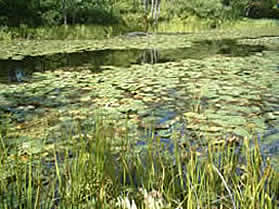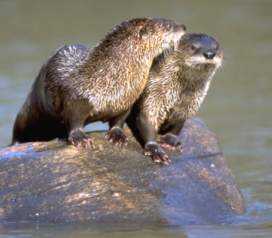 River otters now occupy more than 80 percent of Indiana counties, says Scott Johnson, nongame biologist with the Indiana Department of Natural Resources in a department press release.
River otters now occupy more than 80 percent of Indiana counties, says Scott Johnson, nongame biologist with the Indiana Department of Natural Resources in a department press release.
That is remarkable, because in 1942 river otters had been extirpated from the state. A restoration program began in 1995, 303 otters were transported from Louisiana and released at 12 sites in northern and southern Indiana.The otters thrived and in 2005 they were removed from the state’s endangered species list.
More recently, otters have moved into central Indiana, finding habitat in an area that was long thought not to be ideal, says Johnson.
In what is perhaps the modern sign of wildlife restoration success, the otters are now considered a nuisance to some Indiana pond owners. The IDNR received 34 river otter complaints last year and issued 10 control permits in 2012.
Read the IDNR press release, here.
In Illinois, river otter restoration may be considered even more successful. Last week, National Public Radio reported that Illinois had reinstated an otter trapping season for the first time in 90 years. The story’s headline says that the state has been overrun by otters.
Read or listen to the NPR story, here.
Photo: River otters, courtesy Indiana Department of Natural Resources

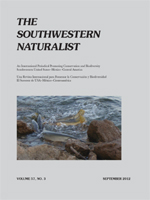
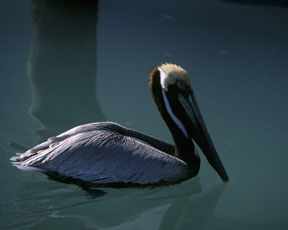 When you think of pelicans losing their feathers’ water repellent qualities because they were soaked in oil and the resulting hypothermia, do you think “oil spill”? Deepwater Horizon?
When you think of pelicans losing their feathers’ water repellent qualities because they were soaked in oil and the resulting hypothermia, do you think “oil spill”? Deepwater Horizon?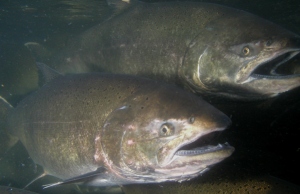
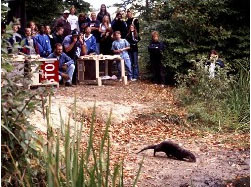 From 1995 to 2001, New York State relocated river otters to the central and western parts of the state, where the species was believed to be extirpated. The recent retrieval of a car-killed river otter was not entirely bad news for the program. A microchip implanted at the time of release indicated it had been released in 2000, making it 12 years old. That’s four years older than the average wild river otter.
From 1995 to 2001, New York State relocated river otters to the central and western parts of the state, where the species was believed to be extirpated. The recent retrieval of a car-killed river otter was not entirely bad news for the program. A microchip implanted at the time of release indicated it had been released in 2000, making it 12 years old. That’s four years older than the average wild river otter. Spring is here and a bunch of wildlife surveys are underway around the country.
Spring is here and a bunch of wildlife surveys are underway around the country.